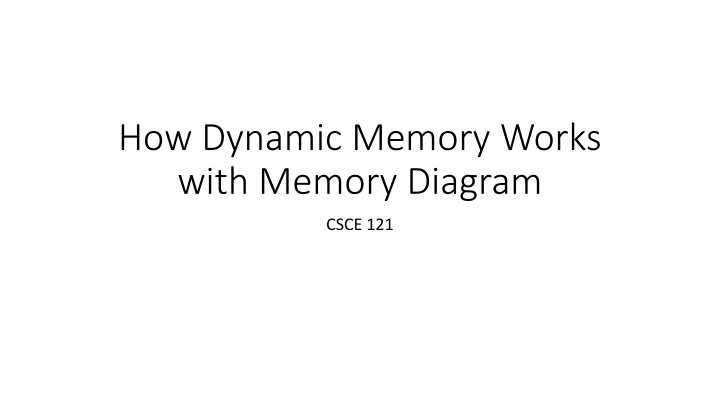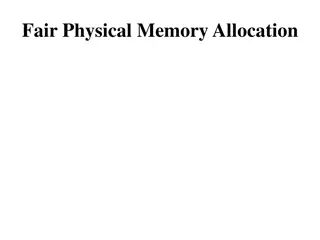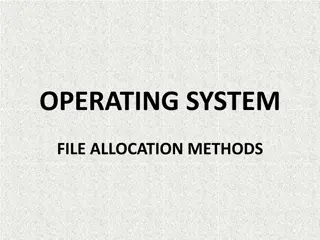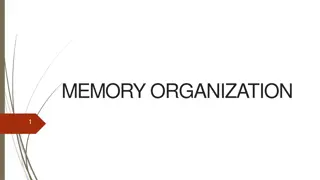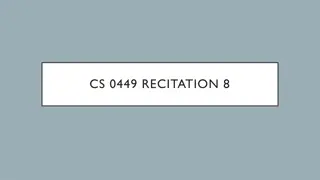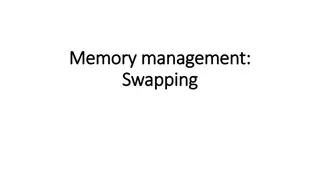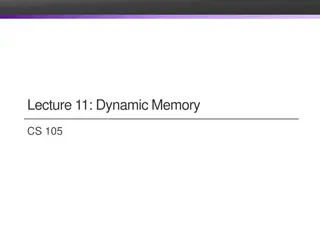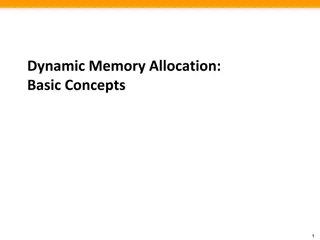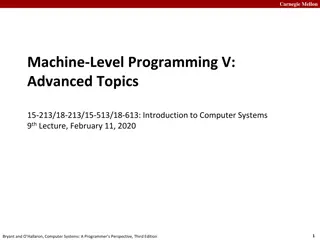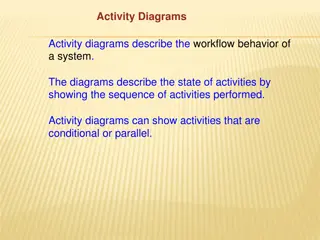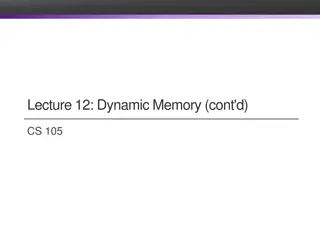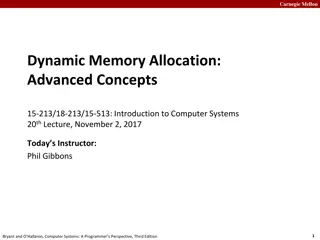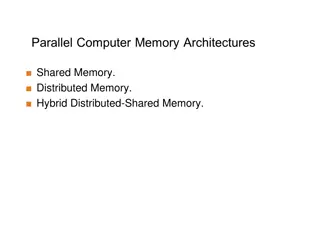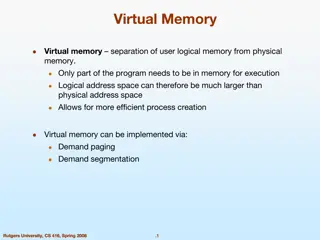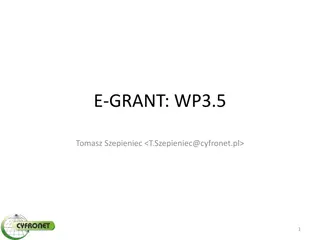Dynamic Memory Allocation in C++ with Memory Diagrams
Explore the concept of dynamic memory allocation in C++ through detailed memory diagrams and code examples. Learn about heap, stack, pointers, object creation, memory management, and potential pitfalls like dangling pointers. Dive into the fundamentals of memory handling in programming.
Download Presentation

Please find below an Image/Link to download the presentation.
The content on the website is provided AS IS for your information and personal use only. It may not be sold, licensed, or shared on other websites without obtaining consent from the author.If you encounter any issues during the download, it is possible that the publisher has removed the file from their server.
You are allowed to download the files provided on this website for personal or commercial use, subject to the condition that they are used lawfully. All files are the property of their respective owners.
The content on the website is provided AS IS for your information and personal use only. It may not be sold, licensed, or shared on other websites without obtaining consent from the author.
E N D
Presentation Transcript
How Dynamic Memory Works with Memory Diagram CSCE 121
output heap identifier stack
output int main() { int i = 14; int* k = &i; k = new int(3); delete k; Date* w = new Date(7, 7, 2015); delete w; w k 14 i w = nullptr; } heap identifier stack
output int main() { int i = 14; int* k = &i; k = new int(3); delete k; Date* w = new Date(7, 7, 2015); delete w; w k 14 i w = nullptr; } heap identifier stack
output int main() { int i = 14; int* k = &i; k = new int(3); delete k; Date* w = new Date(7, 7, 2015); delete w; w 3 k 14 i w = nullptr; } heap identifier stack
output int main() { int i = 14; int* k = &i; k = new int(3); delete k; Date* w = new Date(7, 7, 2015); delete w; w 3 k 14 i w = nullptr; } heap identifier stack
class Date { public: }; int month; int day; int year; // constructors Date(); Date(int month, int day, int year); // accessors and mutators int getMonth(); void setMonth(int month); int getDay(); void setDay(int Day); int getYear(); void setYear(int year); // methods void printDate();
output int main() { int i = 14; int* k = &i; month 7 day 7 k = new int(3); 2015 year delete k; Date* w = new Date(7, 7, 2015); delete w; w 3 k 14 i w = nullptr; } heap identifier stack
output int main() { int i = 14; int* k = &i; month 7 day 7 k = new int(3); 2015 year delete k; Date* w = new Date(7, 7, 2015); delete w; w 3 k 14 i w = nullptr; } heap identifier stack
output int main() { int i = 14; int* k = &i; month 7 day 7 k = new int(3); 2015 year delete k; Date* w = new Date(7, 7, 2015); delete w; w 3 Dangling Pointer k 14 i w = nullptr; } heap identifier stack
